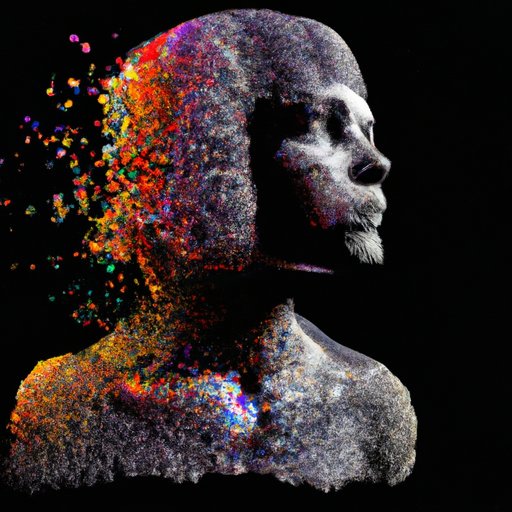Introduction
AI generated art is a form of art created using artificial intelligence (AI) algorithms and technologies. In recent years, AI has become an increasingly popular tool for creating art, with many artists and researchers exploring the creative potential of this new technology. This article will explore how AI generated art works, from the technology and processes used to create it to its potential impact on the art world.
Exploring the Process of AI Generated Art
The process of creating AI generated art typically involves feeding data into an AI algorithm, which then produces a unique piece of art based on that data. The data can be anything from images to music or even text. Depending on the type of AI algorithm used, different types of art can be produced. For example, generative adversarial networks (GANs) are often used to produce images, while recurrent neural networks (RNNs) are used to generate musical compositions.
An Overview of AI Generated Art
AI generated art has a number of benefits over traditional art. As AI algorithms are able to process large amounts of data quickly, AI generated art can be created much faster than traditional art. Furthermore, as AI algorithms are able to recognize patterns in data, AI generated art can often be more complex and detailed than traditional art. Finally, due to its algorithmic nature, AI generated art is often more consistent and repeatable than traditional art.
However, AI generated art also has its challenges. Many people find AI generated art to be less emotionally engaging than traditional art, as the art is created by machines rather than humans. Furthermore, due to the complexity of AI algorithms, it can be difficult to interpret the meaning of AI generated art. Finally, AI generated art is inherently limited by the data it is fed, making it difficult to create truly original works of art.
Comparing AI Generated Art to Traditional Art
When comparing AI generated art to traditional art, there are both advantages and disadvantages to each type of art. On the one hand, traditional art has the advantage of being created by a human artist, making it more emotionally engaging and easier to interpret. Furthermore, traditional art is not limited by the data it is fed, allowing for greater creativity and originality. On the other hand, AI generated art has the advantage of being created quickly and consistently, as well as being able to generate complex and detailed works of art.

Exploring the Impact of AI Generated Art on the Art World
The impact of AI generated art on the art world is still uncertain. Some experts believe that AI generated art will eventually replace traditional art, while others argue that it will merely supplement it. According to Professor Subbarao Kambhampati of Arizona State University, “AI generated art is likely to supplement traditional art, rather than replace it. AI generated art can help reduce the time and effort required to create art, allowing artists to focus on more creative endeavors.”
It is also possible that AI generated art could open up new opportunities for artists. “AI generated art could enable artists to explore new creative possibilities,” says Professor Kambhampati. “By combining traditional art techniques with AI generated art, artists could create entirely new kinds of artworks.”

Investigating How AI Generated Art is Created
To understand how AI generated art is created, it is important to understand the process behind generative art. Generative art is an umbrella term for any art created using algorithms and technologies, such as AI. Generative art typically involves two main steps: training and generation. During the training step, an AI algorithm is trained using data, such as images or sound. During the generation step, the trained algorithm is used to generate a unique piece of art based on the data.

A Deep Dive into the Creative Potential of AI Generated Art
Despite its limitations, AI generated art has great potential for creativity. By combining AI generated art with traditional art techniques, artists can create truly unique works of art. For example, some artists have used AI generated images as a starting point for their artwork, adding their own touches to create something entirely new. Other artists have used AI algorithms to create entire works of art. In addition to visual art, AI generated art can also be used to create music, poetry, and stories.
Conclusion
In conclusion, AI generated art is a fascinating form of art that has the potential to revolutionize the art world. By leveraging the power of AI algorithms and technologies, artists can create unique and complex works of art in a fraction of the time it would take to create traditional art. Moreover, by combining AI generated art with traditional art techniques, artists can create entirely new kinds of artworks. Ultimately, AI generated art promises to open up new possibilities for creativity and expression.
(Note: Is this article not meeting your expectations? Do you have knowledge or insights to share? Unlock new opportunities and expand your reach by joining our authors team. Click Registration to join us and share your expertise with our readers.)
